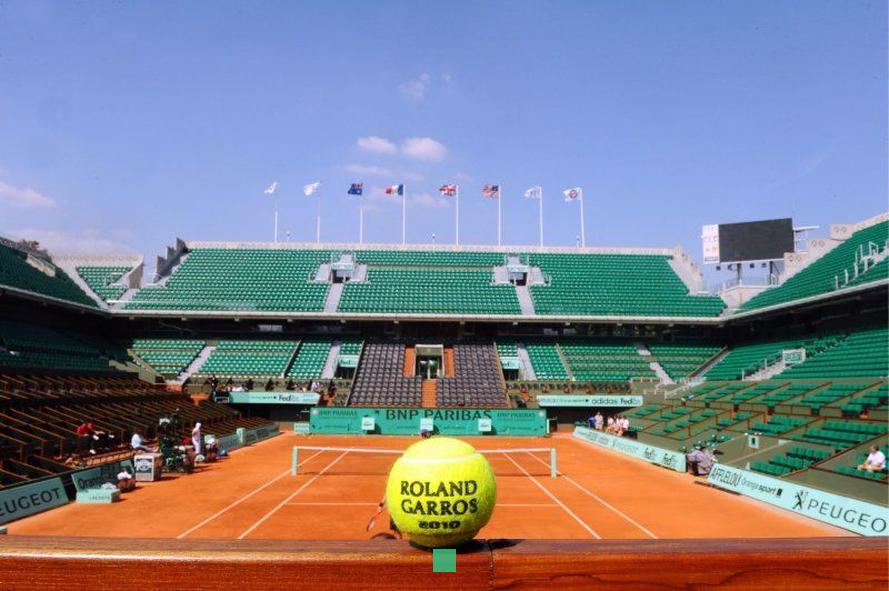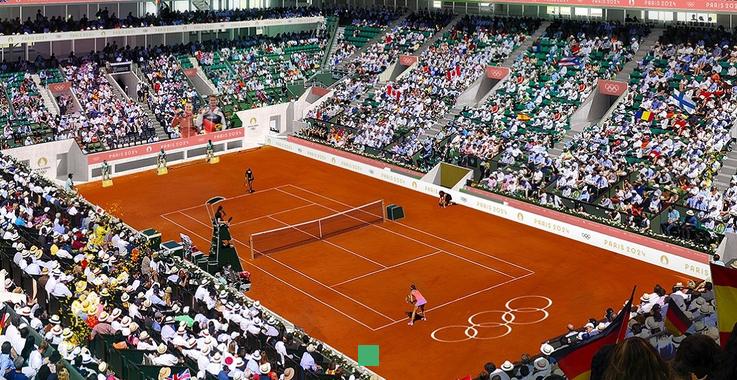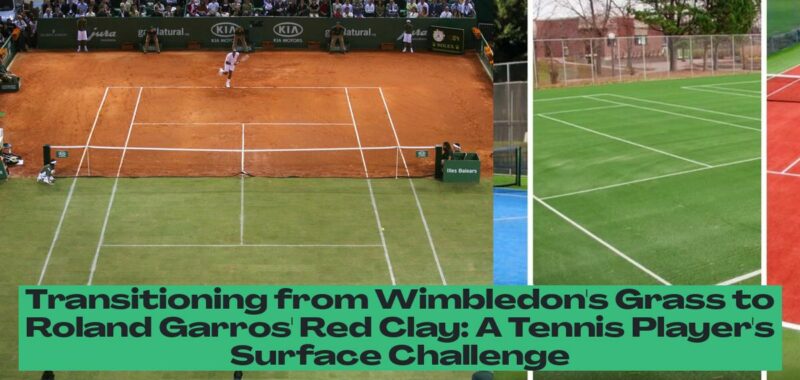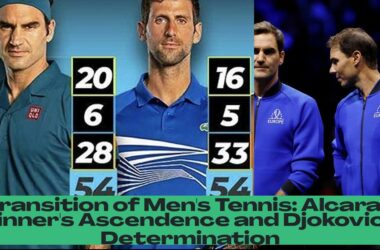From Wimbledon’s Grass to Roland Garros’ Red Clay: A Tennis Athlete’s Surface Shift

Picture this: the sun is shining, the air is crisp, and a symphony of cheers and gasps reverberates through the stands. This is the scene at the Wimbledon Championships, the prestigious tennis tournament held annually on the lush green grass courts of London. But what happens when these elite athletes, accustomed to the smooth glide of the grass, are suddenly thrust onto the gritty red clay of Roland Garros in Paris just weeks later? This is the unique challenge faced by Olympic tennis players in 2024, as they navigate a back-to-back surface shift unlike anything seen in decades.
For the first time in over 30 years, the Olympic tennis competition will be held on the red clay of Roland Garros. This means players who recently transitioned from the dirt of the French Open in June to the grass of Wimbledon in July will need to make another rapid adjustment, all within a short timeframe. The change in surface brings with it a whole new set of challenges, demanding adaptability, strategy, and a keen understanding of the nuances of each playing surface.
The transition from grass to clay is a significant one. Grass courts, with their low bounce and faster pace, favor aggressive serves and volleys, rewarding players with a powerful game. Clay courts, on the other hand, are known for their high bounce and slower pace, encouraging more strategic rallies and demanding precise shot placement. This difference in surface characteristics can drastically alter the game’s rhythm and flow, forcing players to adapt their techniques and tactics.
For players who thrive on the power and speed of grass, the transition to clay can be a demanding one. They might find themselves struggling to control the higher bounce, and their aggressive game may become less effective. Conversely, players who excel on clay, known for their tactical brilliance and ability to grind out points, might feel a bit less comfortable on the faster surface of grass. This drastic shift in playing style can be a major challenge for even the most experienced athletes, highlighting the importance of adaptability and mental strength.
The shift from Wimbledon’s grass to Roland Garros’ red clay is not just a physical challenge; it’s a mental one as well. Players need to be able to adjust their mindset and approach to the game, recognizing the different demands of each surface. Some players might feel a surge of confidence on clay, while others might feel a sense of unease. The mental aspect of the game can be just as important as the physical aspect, and the ability to stay focused and positive in the face of adversity is crucial.
- Olympic tennis players face a unique challenge in 2024 as they transition from Wimbledon’s grass courts to Roland Garros’ red clay within a short timeframe.
- The shift from grass to clay surfaces requires players to adapt their techniques and tactics due to the differences in bounce, pace, and playing style demands.
- Grass courts favor aggressive serves and volleys, while clay courts encourage strategic rallies and precise shot placement.
- Players must showcase adaptability, strategy, and a deep understanding of each playing surface to succeed in back-to-back tournaments with contrasting characteristics.
The Impact of the Surface Shift on Players: A Case Study
One player who has experienced the challenges of this surface shift firsthand is Elena Rybakina, the 2022 Wimbledon champion. Rybakina, known for her powerful serve and aggressive baseline game, found herself struggling to adjust to the clay courts of Roland Garros shortly after her Wimbledon triumph. She admitted that the transition back to clay was more concerning for her than others, highlighting the difficulties players can face when switching between surfaces.
Rybakina’s experience illustrates the unique challenges that this surface shift presents. Players like her, who are accustomed to the faster, more aggressive style of play on grass, might find it difficult to adapt to the slower, more tactical nature of clay. This can lead to frustration, uncertainty, and a loss of confidence, potentially impacting their performance and ultimately their chances of winning.
The shift from grass to clay is not just about adapting to a new playing surface; it’s about adjusting to a different rhythm, a different pace, and a different mindset. Players who can successfully make this transition will be the ones who can embrace the challenge, adapt their game, and ultimately thrive on the red clay of Roland Garros.
The Strategies Behind Adapting to the Surface Shift

So how do these Olympic tennis players navigate this surface shift and excel regardless of the court beneath their feet? We’re about to delve into the strategies they employ to conquer this unique challenge. Here are some key strategies that players are likely to adopt:
- Practice, Practice, Practice: The key to mastering any surface is practice. This means spending ample time on clay courts, getting a feel for the bounce and the pace, and adapting their strokes accordingly. Players might work on their groundstrokes, perfecting their slice and topspin shots, to control the higher bounce of the clay. They may also focus on their footwork, ensuring they are able to move efficiently on the slower surface.
- Strategic Adjustments: The playing style on clay is different from that on grass. Players will need to adjust their game plan, focusing on consistency and patience rather than outright power. This means incorporating more slice shots, employing a more tactical approach, and being prepared for longer rallies. They might also experiment with different strategies, like dropping shots, to outsmart their opponents.
- Mental Toughness: The transition from grass to clay can be mentally taxing. Players will need to stay positive, even when things aren’t going their way, maintain focus, and believe in their ability to adapt. This is where mental strength and confidence play a crucial role. They might engage in visualization techniques, meditation, or other practices to manage their emotions and stay focused on the task at hand.
- Flexibility and Adaptability: The ability to adapt to different conditions is a hallmark of top athletes. Tennis players need to be flexible and adaptable, capable of adjusting their game plan and strategies based on the surface, their opponent, and the match situation. This means being open to trying new things, experimenting with different strategies, and being willing to learn from their mistakes.
The transition from Wimbledon’s grass to Roland Garros’ red clay is a unique challenge that demands adaptability, strategic thinking, and a strong mental game. The players who can successfully navigate this shift will be the ones who can embrace the challenge, adapt their game, and ultimately thrive on the red clay of Paris. As the 2024 Olympics draw closer, the tennis world will be watching with anticipation to see how these athletes rise to the occasion and conquer the clay of Roland Garros.








